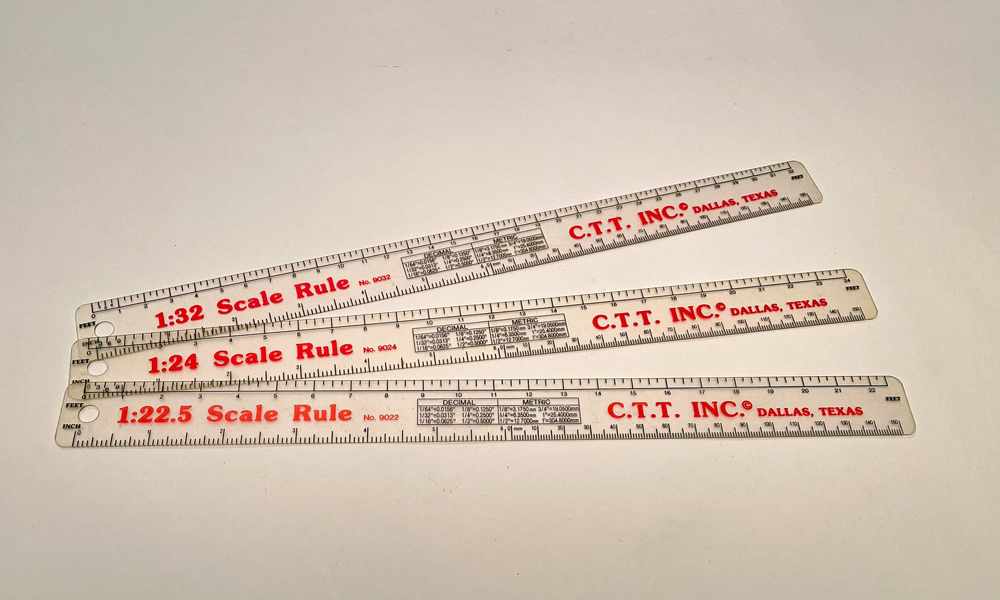Rail comes in many different sizes and materials. Here’s a little background information to help you chose the one that’s right for you.
Rail sizes
The size of model-train rail in any scale is referred to by “code.” For instance, in large-scale railroading we commonly use code-332, code-250, or code-215 rail, although code 197 is also sometimes used. There’s nothing secret about this “code”; it is just the height of the rail measured in thousandths of an inch. So, code-250 rail is .250″ tall, or 1/4″. Code 332 is a little taller and code 215 is a little shorter.
Materials
Rail for garden railroads is currently available in aluminum, steel, brass, nickel silver, and stainless steel. Each material has its advantages and disadvantages. Here are some of them.
Aluminum rail is by far the cheapest, which is its primary advantage. There appear to be different alloys on the market with different properties. I have seen some that is relatively hard and that adds significantly to the structural integrity of handlaid track. On the other hand, I’ve seen some that is dead soft and easily bent. Generally speaking, aluminum is softer than other metals and can even be curved by hand if you wear a pair of leather gloves. However, aluminum rail is more prone to damage and kinking outdoors and it tends to expand more in hot weather.
Aluminum is light in color, which looks unprototypical (if that is important to you), and it does not darken with age. (You can find painted aluminum rail.) Also, aluminum track, while fine for live-steam and battery operation, presents conductivity problems at joints when used for track-powered trains. Although aluminum itself is an excellent conductor, its oxide is not. This problem can be mitigated somewhat with conductive grease inserted into the rail joints and tinned copper jumpers held with stainless-steel screws.
Certain aluminum alloys seem to have a tendency to gum up wheels (especially plastic ones) more than other types of rail. Make sure you know what you are getting. Also, aluminum cannot be easily soldered, making switch building and wire attachment problematic.
Steel is the most prototypical material, since it is what full-size railroads use. It usually costs less than other metals, except aluminum, but may be difficult to find. Its biggest problem is that it is prone to corrosion. I have seen code-215 steel rail completely eaten away by acid rain. However, it was the rail of choice for decades in damp old Britain. A little kerosene was applied to the rail from time to time, often by a specially built tank car, and this kept the rails like new for years on end.
Steel can be soldered, though not as easily as some other materials. It has been used successfully for track-powered trains. It’s a hard metal and is more difficult to work and bend than many of the others, but it makes rugged track. Code-332 steel rail can even be welded to steel ties if you wish. Because of the need to preserve the rail, steel track may require more maintenance than others.
Brass is my personal favorite. It is easy to work, it solders nicely, the cost is moderate, and it weathers to a prototypically near-black color. Code-332 brass rail may have variable weathering characteristics. LGB’s rail weathers quickly while Aristo-Craft’s rail will retain its bright yellow appearance for months. Brass is excellent for live-steam and battery-powered lines, but will have to be cleaned regularly for track-powered trains.
Nickel silver has many of the same qualities as brass. Its big advantage is that it oxidizes very little, minimizing track cleaning. Its bright-silver appearance can be removed with chemical blackeners. While more expensive on a pound-per-pound basis, this rail is easy to work and it solders well.
Stainless steel rail is available in certain sizes. It is the most expensive, but is impervious to just about everything. It’s a hard metal and can be more difficult to work. It does not conduct electricity as well as some of the other metals, but given the relatively large sizes of the rail we use, this should not be a problem. Some alloys can be easily soldered, while others cannot.
All of the above materials, with the exception of aluminum, can be intermixed with little problem. However, electrolytic problems can occur when mixing aluminum and other metals, particularly brass and steel. Stainless steel is more or less inert and can be used with any other metal.
PLEASE NOTE: It is neither our intention nor our desire to recommend one product over another. We suggest you read the product reviews in Garden Railways magazine, talk with your friends, and join your local club (or start one) to find this information.












I have used AMS aluminum 332 flex track with great success outside. It cleans easily, bends gently, and stays put. No worries at all about conductivity! Best of all. it’s half the price of brass!